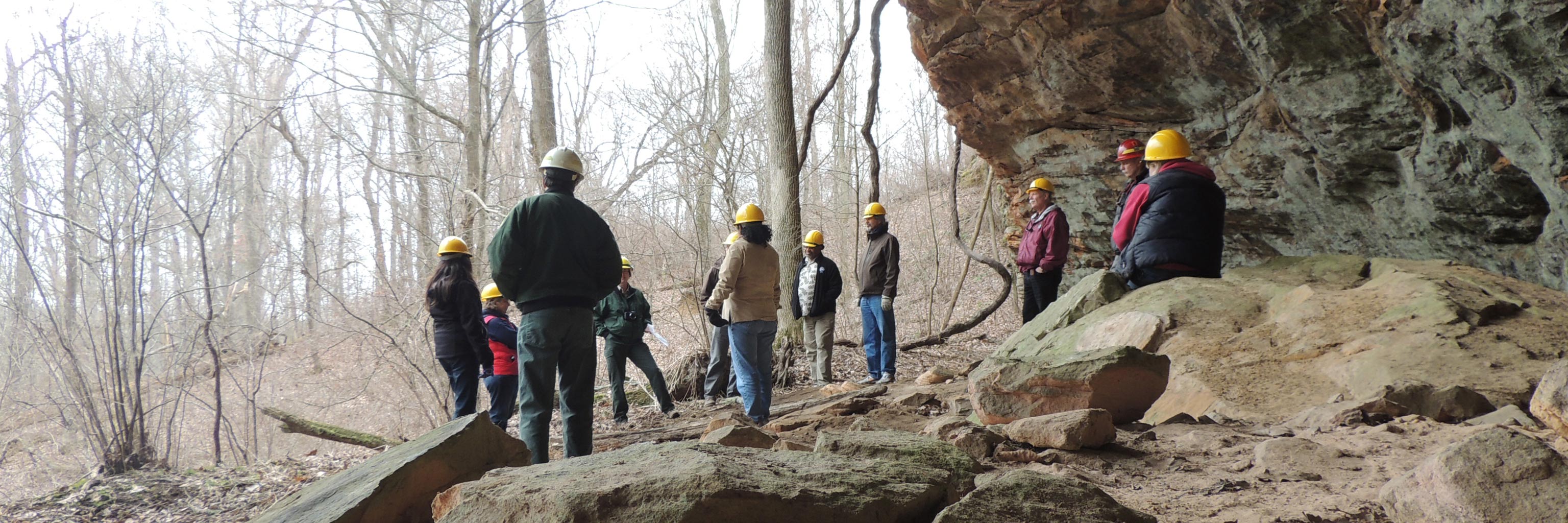Geoarchaeology uses methods and theories developed in the earth sciences to address archaeological questions related to human settlement, artifacts, site taphonomy, paleoenvironments, and more. The geoarchaeology research approach is truly multidisciplinary, and can be a subfield of geology, earth sciences, or anthropology. It incorporates and often facilitates the use of paleoenvironmental reconstructions, the analysis of sediments and stratigraphy, raw material sourcing, geochronology, geography and mapping, geophysical and geochemical techniques, paleontology, and geomorphology. These applications are important to archaeologists because they provide information about human interactions with their prehistoric environments.
Geoarchaeology
Influence on human culture
Human societies depend on resources provided by local floral and faunal communities, water availability, and earth materials. The extent and nature of that dependence has evolved in concert with the development of our species. It is appropriate to pose the question whether the availability of subsistence foods and other raw materials affects cultural change, and how, in turn, the underlying natural forces of climate and geology influence such change. Efforts to recognize and understand such relationships are inherently complex because of the multiple and variable spatial and temporal levels at which they interact. Our aim is to develop integrated approaches to fathom the connections among the diverse variables and forcing factors that couple human cultural development with natural resources.
Climate + Paleoenvironments
Seasonal variations in climate may be affected by short-term events, such as floods and droughts, which are immediate in their impact. However, the timescales of climate change include longer-term perturbations that, in most instances, can far surpass a human lifespan. In addition, trends in climate can be progressive rather than episodic, ultimately leading to profound changes that alter temperatures and precipitation patterns, with significant consequences for the societies rooted in the affected region.
There is a critical need to discern and discriminate the influences of climate versus human activity on the distribution and diversity of vegetation; for example, identifying the more likely cause for deforestation or desertification. The combination of data portraying cultural change with evidence for climate change in a defined spatial and temporal context offers the potential to recognize human response to environmental change.
Geology
Like geologists, geoarchaeologists are often concerned with chronology, sediments, and stratigraphy. Unlike most geologists, geoarchaeologists try to understand these variables in the context of past human occupation in a region. For instance, geoarchaeologists focus on the natural processes that directly affect the preservation of archaeological sites, the distribution of raw materials (for creating tools, art, or obtaining food), sediment deposition and geomorphological changes within archaeological sites. The physical properties of the raw materials, coupled with the chronological and geomorphological data, can lead to a better understanding of cultural change and continuity through time. The governing processes involved in the weathering of bedrock that aids the exposure, transport, and deposition of mineral and rock resources can inform our opinions of how far human groups traveled for resources, with whom they might have traded and why people choose to live in certain settings.
Human settlement
The specific conditions that favor human settlements are often linked intrinsically to resource availability. A place of settlement is fixed in space and time to utilize the benefits provided by the local landscape. Sites are often organized to exploit resources, making the accessibility of or proximity to raw materials important. Societies face major challenges when finite resources become depleted locally, which can only be solved by identification of new resources or engagement in trade, which may represent events of cultural significance.
Geoarchaeology is also concerned with geomorphological changes that have affected prehistoric archaeological site preservation and destruction. Fluvial systems are particularly important because humans used river systems as travel corridors and as resource extraction locales. However, fluvial geomorphology is complicated by cyclical patterns of erosion and deposition, resulting in site burial or removal from the archaeological record through erosion. Geoarchaeological methods can define the depositional and erosional chronologies of sediments in the subsurface and help researchers predict where sites might remain in buried contexts. Site predictive modeling is particularly important when studying late Pleistocene and early Holocene archaeological sites around the world.
Site taphonomic research focuses on the geological mechanisms that alter archaeological sites through time. For instance, geomorphological mechanisms that alter site taphonomy include burial and erosion. The methods used to analyze the timing and significance of these events include the assessment of chronology, stratigraphy, microstratigraphy, geochemistry, and geophysical research.
Integration of influences
Recognition of causal relationships between societal and cultural change, climate change, and geology have largely arisen from serendipity rather than a systematic examination and modeling of the connections among them. An approach that can place these data sets within a common spatial and temporal framework offers the opportunity to examine in a purposeful manner how, for example, societal change was functionally linked to resources, or affected by climate change. We want to permit a targeted search for answers to questions that ultimately will enable researchers in archaeology, geology, and climatology to understand the influential forces that shape cultural evolution, and the nature of societal responses to crises in resource availability.



 The College of Arts
The College of Arts